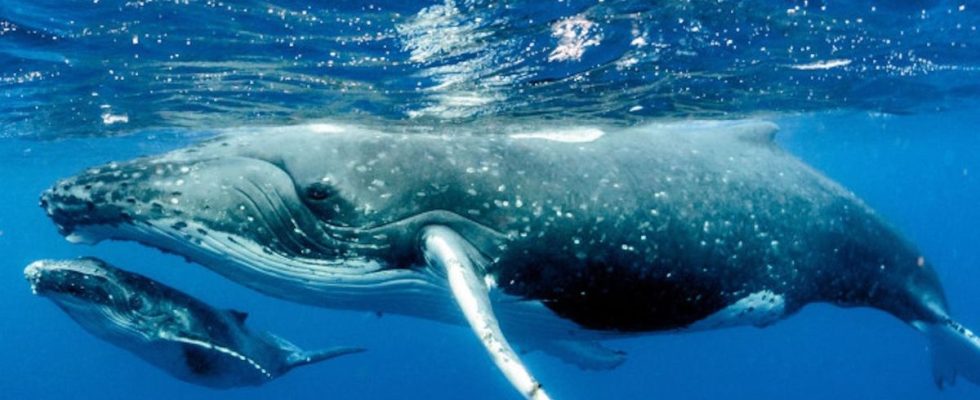Published on
Updated
Reading 3 min.
An explanation of menopause in certain species of cetaceans could shed light on the cause of the phenomenon in women, according to a study published Wednesday: this singularity could be linked to the long life expectancy in these two species.
Scientists are wondering about the mechanism by which a female can no longer reproduce although she still has many years of life ahead of her, while most animals seize every chance to multiply.
The mystery of menopause in certain mammals
The mystery is all the greater because out of 5,000 species of mammals, menopause only concerns women and five species of toothed cetaceans, including orcas and narwhals. But not the dolphins among these same toothed cetaceans.
A team of British researchers compared these two groups to try to understand why one of them evolved to include menopause, and what this might teach about the mechanism in women.
Because despite our differences, humans share a “convergent life course” with these marine animals which must have favored the onset of menopause, explains the study published in Nature.
It is based on several hypotheses explaining menopause, particularly that relating to life expectancy.
“The grandmother hypothesis”
Females of the five species of toothed cetaceans with menopause live about 40 years longer than other cetaceans of the same size. They also generally outlive males of their species.
Female orcastypically live to be 60 or 70 years old, but males all die before age 40“, explained in a press conference the first author of the study, Samuel Ellis, of the University of Exeter.
A fact supporting the “grandmother hypothesis”, according to which older females take care of their grandchildren. With an advantage linked to menopause.
“The second part of the story concerns the competition“, according to study co-author Darren Croft. When orcas “mother and daughter reproduce at the same time, the young of the older female“have a shorter life expectancy because of competition for food,” he says.
The species therefore has “evolved towards greater life expectancy with a shorter reproductive period“, again according to Darren Croft.
“It’s the same kind of life course that we observe in humans.“, he adds. The similarities in the social structures of these different species turn out to be “absolutely striking”.
Cohabitation of brothers and sisters
“The old matriarchs” play a preeminent role, according to him. The experience gained during their lives helps others through hardships such as lack of food.
But having a matriarchal society is not enough. Old female elephants, for example, continue to reproduce well into their old age.
A difference between the two species is that old female cetaceans continue to take care of their sons, while the latter leave the group in elephants.
The fact that siblings continue to cohabit (until early adulthood) could be a common and unique trait among the five cetacean species and humans affected by menopause.
However, all of this “does not provide a definitive answer to the question of how menopause evolved“, commented anthropologist Rebecca Sear, of the London School of Hygiene and Tropical Medicine, in an article accompanying the study in Nature.
Cetaceans are very difficult to study and much of the data used in research results from mass strandings of these animals, she warned.
She also pointed out the underinvestment in research concerning menopause, due to a bias directing studies towards mechanisms affecting men.
“Human grandmothers, like cetacean grandmothers, have an important role in the lives of their adult children and grandchildren. And yet older women are too often ignored in public policy and medical research“, according to her.
